Square Marguerite 30
1901
Brothers Albert et Lucien Lenoir, who were both watch-makers, began trading at the corner of Square Marguerite and Rue Véronèse in a house, in eclectic style, built in 1900, by Henri Cloquet.
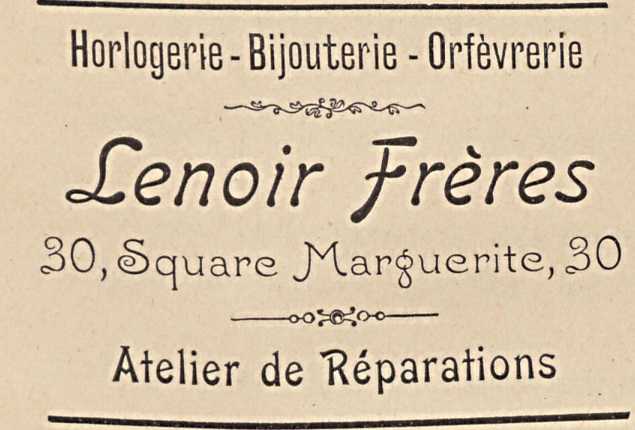
After the marriage of his brother Albert, Lucien Lenoir took on the business alone for the next 44 years. His maidservant replaced him when he needed to leave and had bad luck…
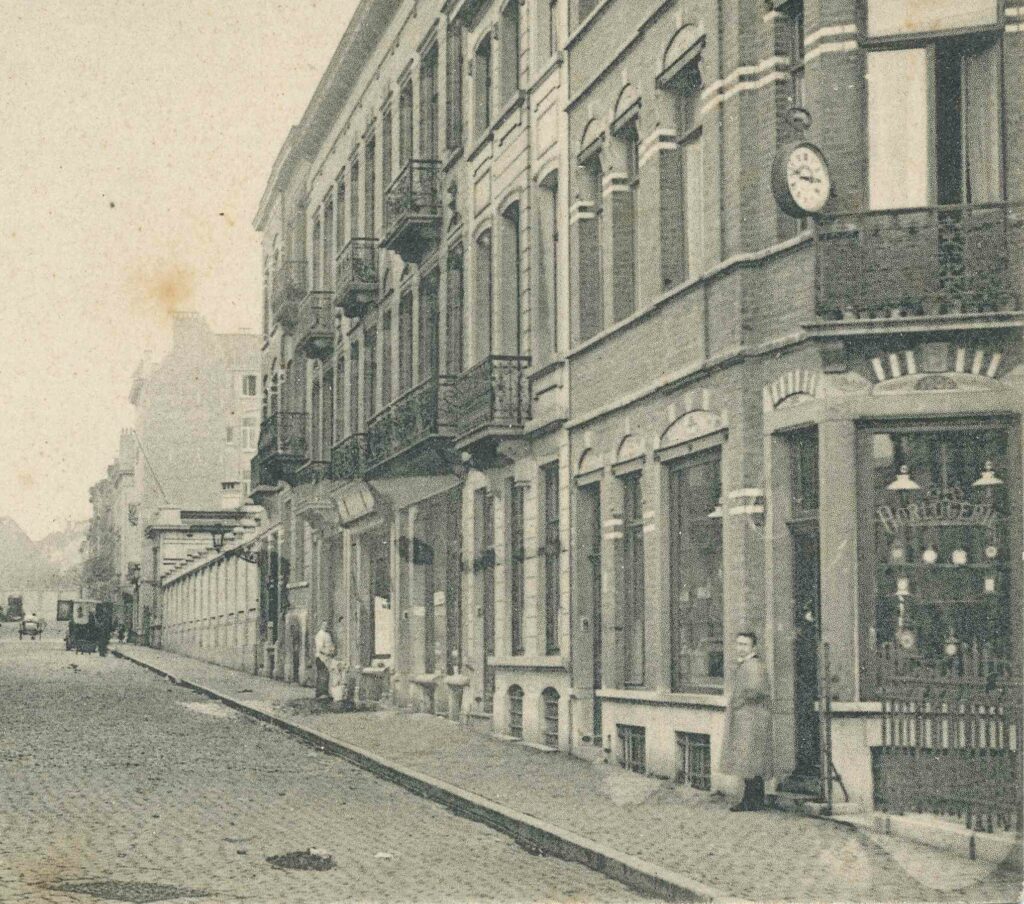
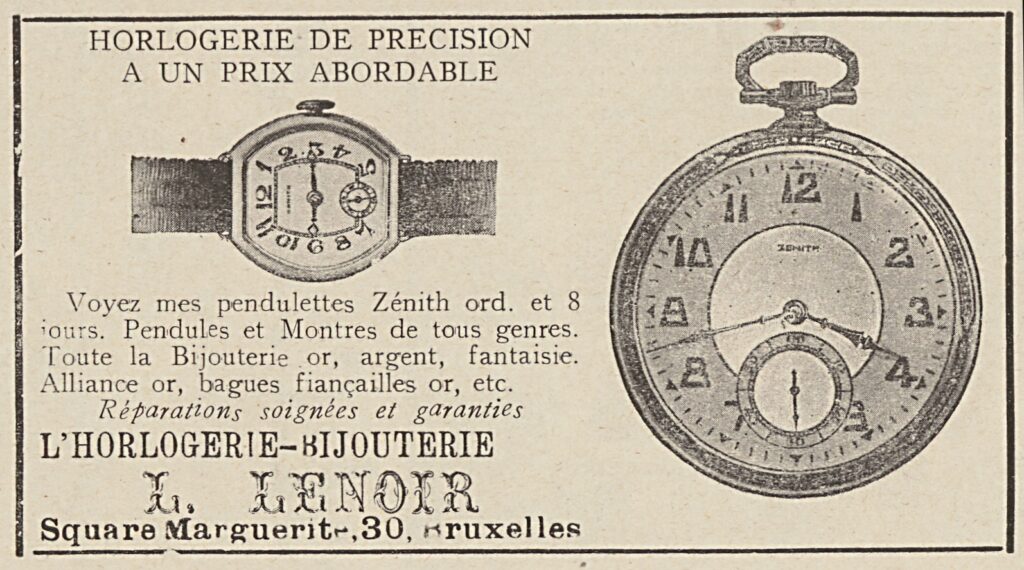
1944-47
A famous watchmaker from Antwerp, Jan-Frans Slaets, briefly opened a shop in Brussels on Square Marguerite.
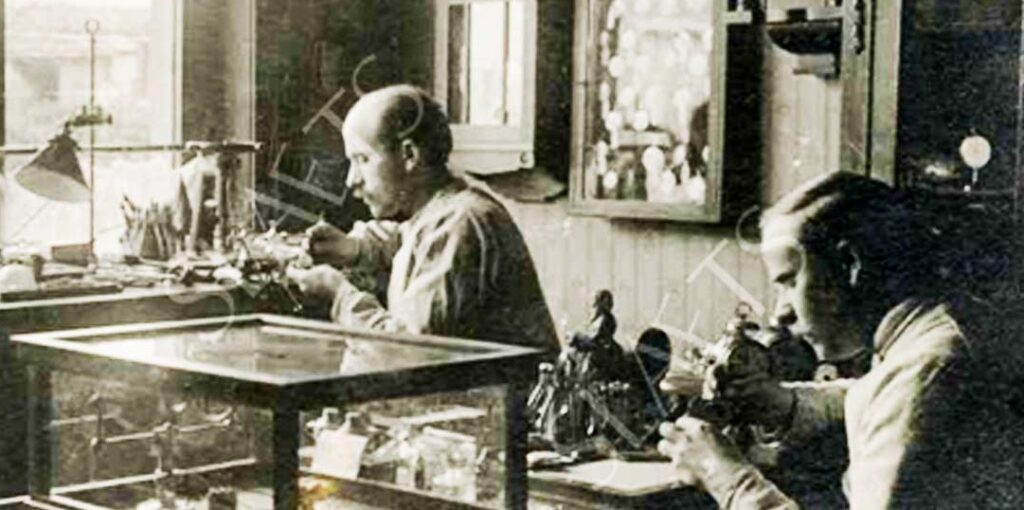
1948
The goldsmith Célestin Tordeurs opened his shop, with a display of luxury jewellery and watches, as well as a cupboard filled with silverware (plates, platters, table displays, candlesticks, religious items etc.). As a goldsmith he mainly worked with solid silver, for example by decorating crystal from Val Saint Lambert with silver.
His family lived upstairs. Unfortunately, none of his children wanted to follow him into the business.

1958
Marcel and Gaby Heyvaert extended the commercial ground floor towards rue Veronese.
Initially Grani-Flora mostly sold seeds from the Vadigran company in Lennik, owned by Mrs Heyvaert’s family, for the gardens in the area (it was the beginning of flower, fruit and vegetable gardening as we know it today). Floral art and the sale of natural flowers will gain momentum a little while after, when the area became popular with European public servants.
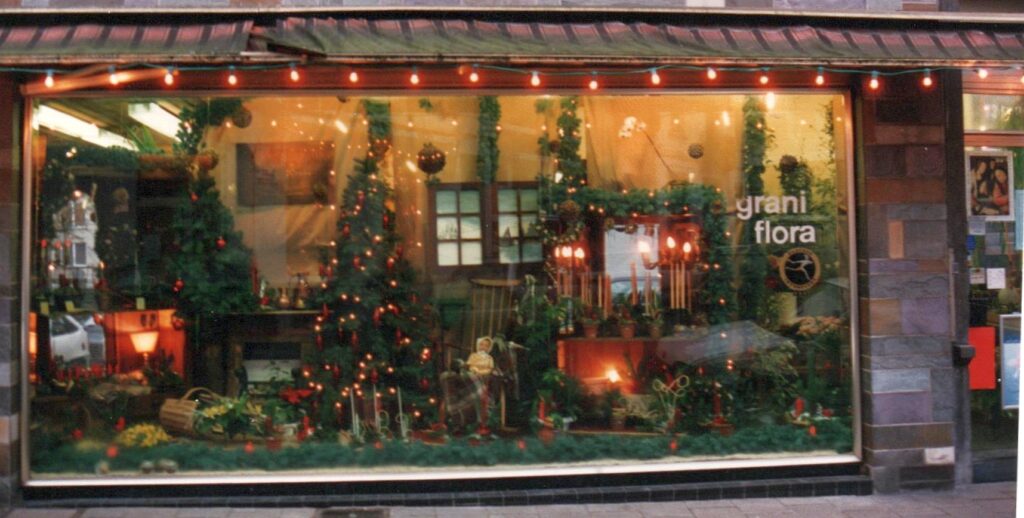
1985
In 1985, the florist Dominique Nowé took on Grani-Flora and developed the window displays to include specific themes. These were often recognised by the city of Brussels. At the beginning of the 21st century, he transferred the business to one of his workers and soon after it went bankrupt.
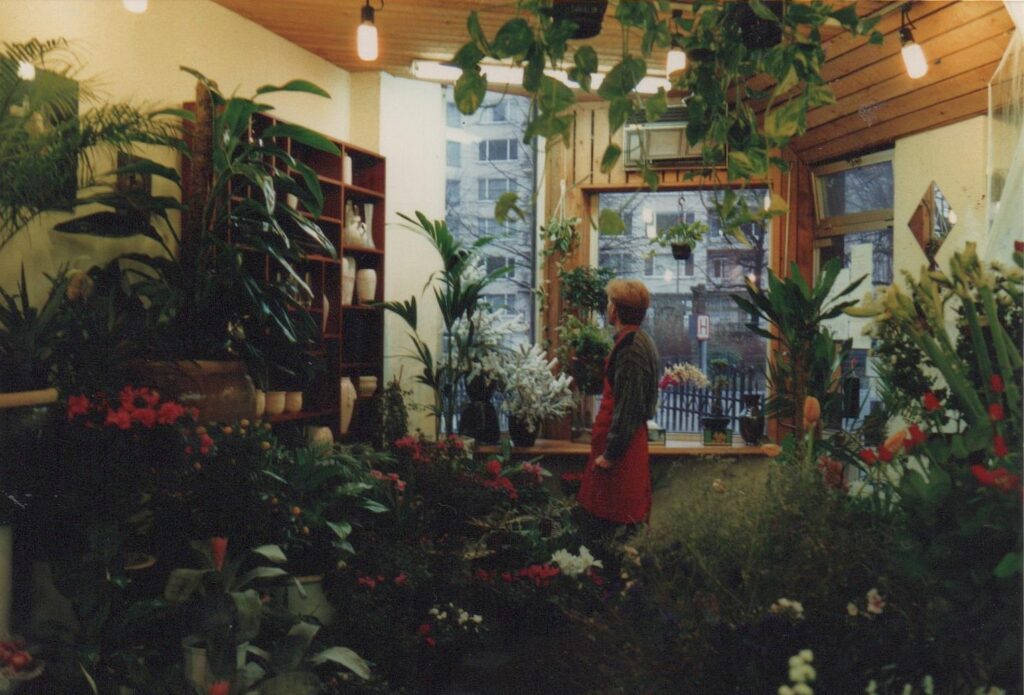
2010
Steve Bosteels transformed the ground floor into the laundrette we know today.
